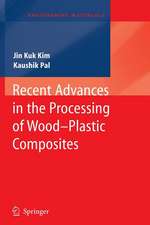Microdroplet Technology: Principles and Emerging Applications in Biology and Chemistry: Integrated Analytical Systems
Editat de Philip Day, Andreas Manz, Yonghao Zhangen Limba Engleză Paperback – 8 aug 2014
| Toate formatele și edițiile | Preț | Express |
|---|---|---|
| Paperback (1) | 638.43 lei 43-57 zile | |
| Springer – 8 aug 2014 | 638.43 lei 43-57 zile | |
| Hardback (1) | 643.34 lei 43-57 zile | |
| Springer – 28 iul 2012 | 643.34 lei 43-57 zile |
Preț: 638.43 lei
Preț vechi: 751.10 lei
-15% Nou
Puncte Express: 958
Preț estimativ în valută:
122.20€ • 132.78$ • 102.72£
122.20€ • 132.78$ • 102.72£
Carte tipărită la comandă
Livrare economică 21 aprilie-05 mai
Preluare comenzi: 021 569.72.76
Specificații
ISBN-13: 9781489999740
ISBN-10: 1489999744
Pagini: 256
Ilustrații: X, 246 p.
Dimensiuni: 155 x 235 x 14 mm
Greutate: 0.36 kg
Ediția:2012
Editura: Springer
Colecția Springer
Seria Integrated Analytical Systems
Locul publicării:New York, NY, United States
ISBN-10: 1489999744
Pagini: 256
Ilustrații: X, 246 p.
Dimensiuni: 155 x 235 x 14 mm
Greutate: 0.36 kg
Ediția:2012
Editura: Springer
Colecția Springer
Seria Integrated Analytical Systems
Locul publicării:New York, NY, United States
Public țintă
ResearchCuprins
Preface.- Physics of multiphase microflows and microdroplets.- Microfluidic droplet manipulations and its applications.- Active control of droplet formation process in microfluidics.- Recent advances in electrowetting microdroplet technologies.- Automated droplet microfluidic chips for biochemical assays.- The dropletisation of bio-reactions.- Droplet-based microfluidics as a biomimetic principle: from PCR-based virus diagnotics to a generalized concept for handling of biomolecular information.- Droplet microreactors for materials synthesis.- Single-cell analysis.- Trends and perspectives.
Notă biografică
Yonghao Zhang, Senior Lecturer in Mechanical Engineering, Strathclyde University, Glasgow, Scotland. During his career, he worked at the Department of Engineering, University of Aberdeen, Scotland; and the Daresbury Laboratory, Warrington, England.
Philip Day, Reader in Quantitative Analytical Genomics, CIGMR, Faculty of Medicine, and Principal Investigator at the Manchester Interdisciplinary Biocentre, The University of Manchester, England. During his career, he worked at the Birmingham Children's Hospital, England; the Wellcome Trust Centre for Complex Diseases, Oxford, England; Department of Biochemistry, Oxford University, England;founded the Functional Genomics Unit, Children's University Hospital, Zurich, Switzerland; and at ISAS, Institute for Analytical Sciences, Dortmund, Germany.
Andreas Manz, Professor in Micro Systems for Life Sciences, Department of Physics and Mechatronics, The Saarland University, and Head of Research, KIST Europe, Saarbrucken, Germany. During his career, he worked at the Chemistry Department, ETH Zurich, Switzerland; at Hitachi Corp., Tokyo, Japan; at Corporate Research, Ciba-Geigy Corp, Basel, Switzerland; at the Chemistry Department, Imperial College London, England; at Caliper Corp., Palo Alto, USA; at the Department of Biochemical and Chemical Engineering, Technical University Dortmund, Germany; at the ISAS, Institute for Analytical Sciences, Dortmund, Germany; and at FRIAS, Freiburg Institute for Advanced Studies, University of Freiburg, Germany.
Philip Day, Reader in Quantitative Analytical Genomics, CIGMR, Faculty of Medicine, and Principal Investigator at the Manchester Interdisciplinary Biocentre, The University of Manchester, England. During his career, he worked at the Birmingham Children's Hospital, England; the Wellcome Trust Centre for Complex Diseases, Oxford, England; Department of Biochemistry, Oxford University, England;founded the Functional Genomics Unit, Children's University Hospital, Zurich, Switzerland; and at ISAS, Institute for Analytical Sciences, Dortmund, Germany.
Andreas Manz, Professor in Micro Systems for Life Sciences, Department of Physics and Mechatronics, The Saarland University, and Head of Research, KIST Europe, Saarbrucken, Germany. During his career, he worked at the Chemistry Department, ETH Zurich, Switzerland; at Hitachi Corp., Tokyo, Japan; at Corporate Research, Ciba-Geigy Corp, Basel, Switzerland; at the Chemistry Department, Imperial College London, England; at Caliper Corp., Palo Alto, USA; at the Department of Biochemical and Chemical Engineering, Technical University Dortmund, Germany; at the ISAS, Institute for Analytical Sciences, Dortmund, Germany; and at FRIAS, Freiburg Institute for Advanced Studies, University of Freiburg, Germany.
Textul de pe ultima copertă
Over the last 20 years of microfluidics and chip engineering, so-called “Lab on Chip” technology has led to many exciting results, PhD theses, books, journal publications, several new journals, and commercial products. Trends have shifted from applications in chemistry to cell biology and clinical diagnostics, from electrophoresis and biosensors to digital microfluidics and droplet-based methods, and from micrometre-sized features to nanostructures and molecular self-assembly.
And there seem to be no limits in sight. The only problem arising is that academic research continues to proceed at an ever increasing pace compared to the real-world applications and commercialisation of “Lab on Chip”. Therefore, the purpose of this book is to bring together authors in this multidisciplinary field to provide overviewsof two-phase flow, droplets, and digital microfluidics for biological and medical applications. It is currently the only book dedicated to droplets in microfluidics that goes beyond electrowetting methods. Included are the novel areas of next generation sequencing and emulsion PCR (polymerase chain reaction), together with analyses on the ramifications of droplet-based reactions for biochemical assays and their commercial viability.
And there seem to be no limits in sight. The only problem arising is that academic research continues to proceed at an ever increasing pace compared to the real-world applications and commercialisation of “Lab on Chip”. Therefore, the purpose of this book is to bring together authors in this multidisciplinary field to provide overviewsof two-phase flow, droplets, and digital microfluidics for biological and medical applications. It is currently the only book dedicated to droplets in microfluidics that goes beyond electrowetting methods. Included are the novel areas of next generation sequencing and emulsion PCR (polymerase chain reaction), together with analyses on the ramifications of droplet-based reactions for biochemical assays and their commercial viability.
Caracteristici
The only book dedicated to microdroplets in microfluidics to go beyond electrowetting Includes the novel areas of next generation sequencing and emulsion PCR Analyzes the ramifications of dropletized reactions for biochemical analytical essays Includes supplementary material: sn.pub/extras






















